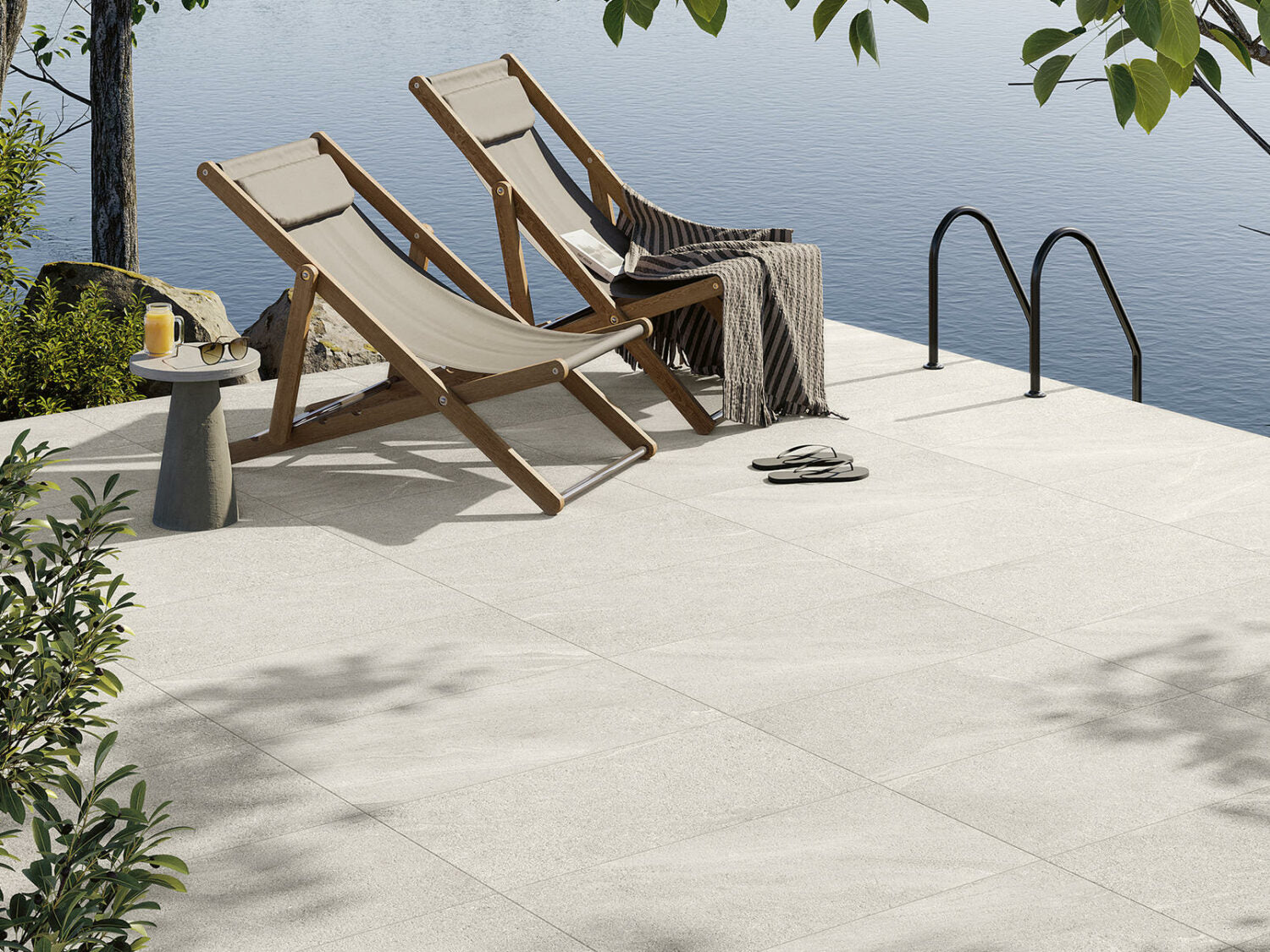I humbly admit: I didn't really make a distinction between ceramic and porcelain... but there is one. Even less did I know that porcelain could be used for flooring a terrace! We really learn something new every day.
The idea for this article came to me when, for a friend who was landscaping her yard and asked me for advice on the floor covering for her terrace, I asked Emard Couvre-Planchers, with whom I often do business. They then told me: "Your friend should opt for porcelain tiles."
Porcelain? Outside? In Quebec?
Why? “For its strength and durability, its elegance and its ease of maintenance,” the specialist explained to me.
Like you, the answer surprised me.
 Chamonix Tiles, 24 in. x 24 in.
Chamonix Tiles, 24 in. x 24 in.
Ceramic vs Porcelain
First, what's the difference between ceramic and porcelain? Both are made from clay, and both are fired. But in the case of porcelain, other minerals are added that allow for better compression of the materials and firing at much higher temperatures, virtually eliminating moisture from inside the tiles. As a result, porcelain is denser and stronger, making it better suited for high-traffic areas.
Another difference: the colour of a ceramic is applied on the surface (the glaze), while that of a porcelain is the same throughout the thickness of the tile. Of course, a glaze can also be applied to porcelain – for example to add patterns – but this thin, more fragile layer compromises the durability of the tile when used outdoors in a northern climate like ours, particularly because of the necessary de-icing in winter.
Either way, since it comes in a wide variety of natural-looking colours and textures – concrete, stone, slate, wood and more – there’s no need to glaze outdoor porcelain. There’s a stylish option to match any decor. As for tile size, there are a variety of formats, from 24 by 24 in. to 32 by 32 in. to 16 by 32 in.

Kingstone Platinum Tile, 32" x 32"
Porcelain tiles: waterproof, stain-resistant and scratch-resistant
With their moisture absorption rate of 0.5%, porcelain tiles are virtually impermeable, and therefore more resistant to temperature fluctuations, freezing and thawing. They also do not store heat, which makes them pleasant underfoot even when the sun is blazing .
Porcelain tiles are stain-resistant, scratch-resistant, and because they are non-porous (unlike ceramic and concrete pavers), dirt does not adhere to them. Maintenance is easy: simply sweep and mop with warm water.
Lighter than concrete pavers, porcelain tiles are easier to handle. It is possible to install them yourself, but you must make sure to properly prepare the ground on which the tiles will be laid. However, professional help is recommended.
To find out more – we’re always learning! – do as I did and contact the specialists at Emard Couvre-Planchers.
PS. For the record, my friend finally chose Kingstone Platinum tiles and it's GORGEOUS!
Opening photo: New England tiles, 16 in. x 32 in.
Julie Deslauriers is an actress, stylist, interior design columnist and eco-friendly mom. You've probably seen her on Chambres en Ville or other shows? Alongside her acting career, Julie has developed another passion: interior design.
We are happy about our brand new editorial collaboration and her valuable advice. You can follow her on her Instagram feed @lejuliebazar .
Stay tuned for more decorating tips from Julie!





